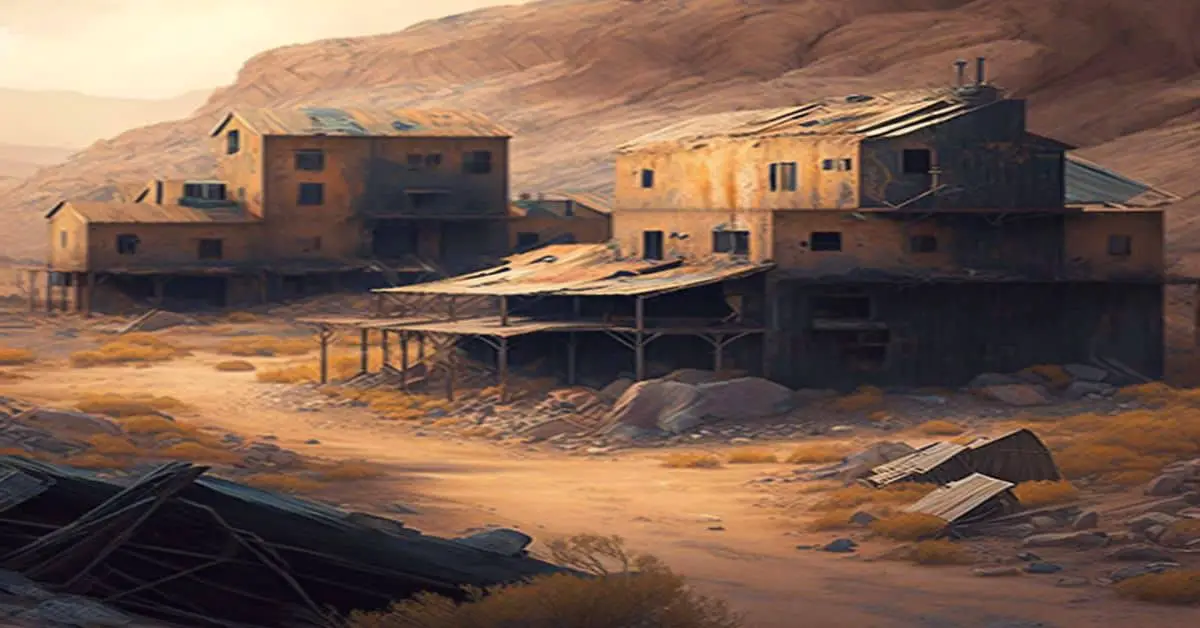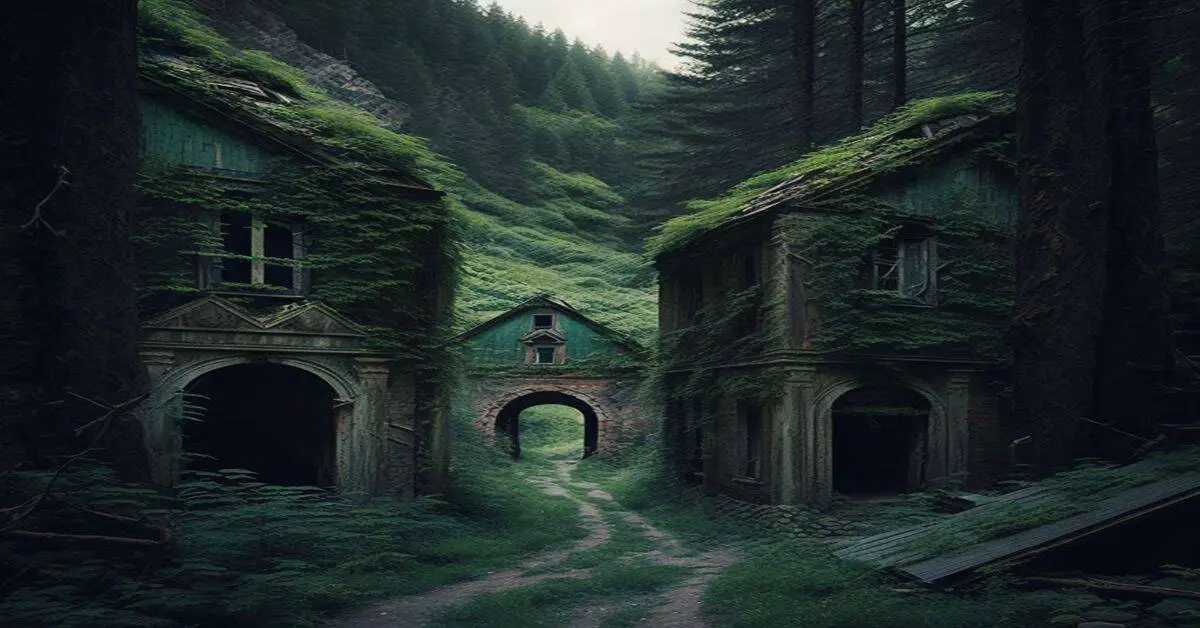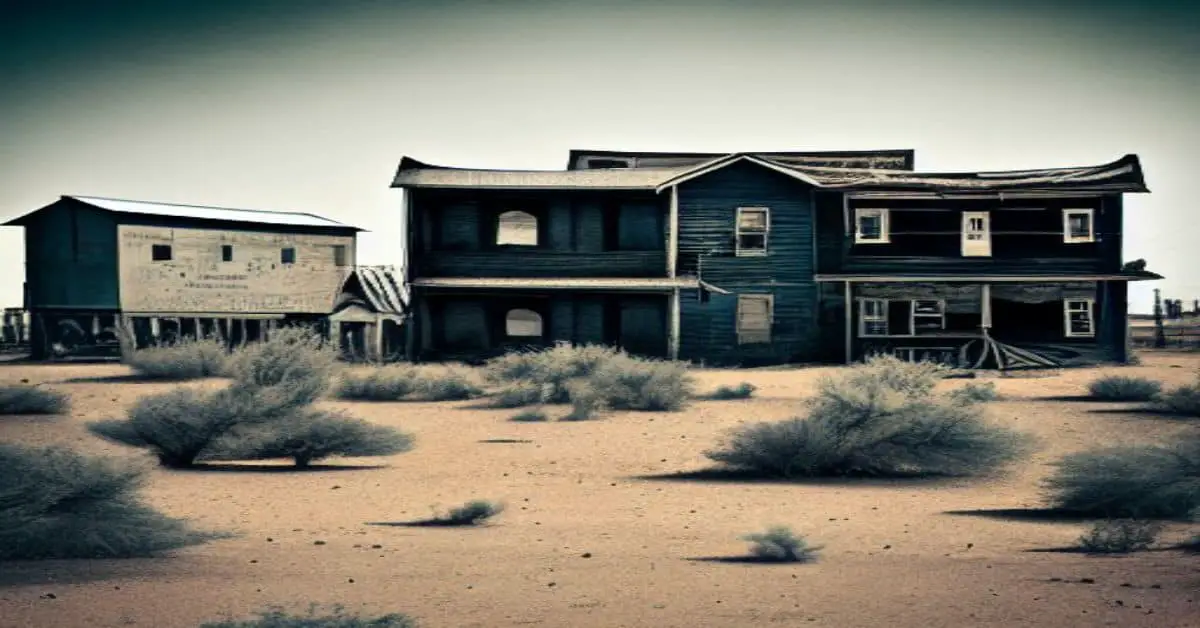Nestled in the heart of Colorado lies a hidden gem waiting to be discovered by curious travelers and history buffs alike. Hartsel, a small ghost town named after Samuel Hartsel, a prominent rancher, boasts a rich history and well-preserved buildings, offering a glimpse into the past and a chance to step back in time.
This town was once a hub for loading cattle, sheep, and hay, and today, visitors can explore the remains of the town, including a church, school, hotel, and grocery store, as well as the old railroad frame station and cattle chutes.
Accessing Hartsel is relatively easy, as it is located on US Highway 24, approximately 35 miles west of Colorado Springs and 75 miles south of Denver. The town is situated in the South Park Basin, surrounded by the stunning Rocky Mountains, making for a scenic drive to the destination.
Visitors can explore the town on foot, taking in the well-preserved buildings and structures that harken back to Hartsel’s heyday as a bustling hub for ranching and agriculture. As one of Colorado’s few remaining ghost towns, Hartsel offers a unique experience for those seeking to learn about the state’s rich history and cultural heritage.
Key Takeaways
- Hartsel is a small ghost town in Colorado, located on US Highway 24, approximately 35 miles west of Colorado Springs and 75 miles south of Denver, surrounded by the stunning Rocky Mountains.
- Hartsel boasts a rich history and well-preserved buildings, offering a glimpse into the past and a chance to step back in time. Visitors can explore the remains of the town, including a church, school, hotel, and grocery store, as well as the old railroad frame station and cattle chutes.
- The nearby Spinney Mountain State Park offers hiking trails and stunning views of the mountains, making the area a haven for outdoor enthusiasts with plenty of hiking, fishing, and camping opportunities.
- Hartsel acknowledges and honors the legacy of the Native Americans, whose cultural heritage is an essential part of the town’s history. The town’s attractions have great tourism potential and make it a unique destination for history buffs, photographers, and anyone interested in exploring the remnants of a once-thriving community.
Location and Access
The location of Hartsel, a ghost town in Colorado, can be accessed by traveling southbound on US Hwy. 285 for 1.0 mile, turning left on CO-9 Hwy. for 16.2 miles, and taking a left on US-24 Hwy. and going 1.0 mile. The town is situated in the Park County and can be easily reached by car.
Visitors driving from Denver will take approximately 2 hours to reach Hartsel.
Getting there, visitors can take advantage of the scenic routes and hiking trails nearby. The area is a haven for outdoor enthusiasts with plenty of hiking, fishing, and camping opportunities. The nearby Spinney Mountain State Park offers hiking trails and stunning views of the mountains.
As visitors explore the area, they can also discover the remains of the town’s history, including the church, school, hotel, and old hot springs pumps.
History and Origins
Originating from the early days of Samuel Hartsel’s ranch, the settlement that would later become Hartsel, Colorado, has a rich history steeped in the region’s cultural heritage.
Samuel Hartsel was a prominent rancher who played a significant role in the town’s development. He used to pump hot water from the hot springs to his house using drilled out wooden logs, and his legacy can still be seen in the town.
The Native Americans had used the hot springs for their therapeutic properties long before the settlement was established. The springs were believed to have healing powers, and the Native Americans used them for various purposes, including medicinal and spiritual practices.
The cultural heritage of the Native Americans is an essential part of Hartsel’s history. It is a testament to the town’s past and its connection to the region’s indigenous people. Even today, the town acknowledges and honors this legacy.
In conclusion, Hartsel’s origins are rooted in the legacy of Samuel Hartsel and the cultural heritage of the Native Americans. These historical connections are a reminder of the town’s past and its place in the region’s rich history.
Remains and Attractions
One notable aspect of the area is the variety of remains and attractions that can be found in Hartsel. The town offers visitors a glimpse into the past with its numerous old buildings, including a church, school, hotel, and grocery store. The remains of the old hot springs pumps and ranch serve as a reminder of the town’s history, especially the use of hot springs by Native Americans before it was even a town. The town also has a railroad frame station, cattle chutes, and long mounds of dirt where the old railroad used to run out of town.
These remains are not just historical artifacts but also offer great tourism potential. The town’s attractions would appeal to history buffs, photographers, and anyone interested in exploring the remnants of a once-thriving community. The various old buildings and the unique railroad remains make Hartsel a unique destination.
The town’s old hotel foundation is a fascinating sight that speaks to the town’s former grandeur. Overall, the remains and attractions in Hartsel offer a window into the past and a memorable experience for visitors.
Frequently Asked Questions
What caused the decline of Hartsel’s population and eventual transformation into a ghost town?
Hartsel’s decline can be attributed to economic factors such as the railroad bypassing the town and natural disasters like droughts. These events led to migration and loss of cultural heritage, making the town a ghost town.
Are there any ghost stories or legends associated with Hartsel?
No haunted tales or supernatural sightings have been reported in Hartsel. While the town has a rich history, no known legends or stories associated with the town’s status as a ghost town.
Has any restoration or preservation work been done on the town’s remaining structures and artifacts?
Preservation efforts have been made on some structures, such as the church, school, and Hartsel artifacts. The town’s historical significance as a cattle and hay loading area has been recognized, but further restoration may be necessary.
What was the main industry or economy of Hartsel before its decline?
Hartsel’s main economy was ranching, as it was the primary area for loading cattle, sheep, and hay. Additionally, mining, agriculture, and transportation played significant roles in the town’s economy before its decline.
Are there any plans or proposals to revitalize Hartsel or turn it into a tourist destination?
Revitalization efforts for Hartsel have not been identified, but the town has tourist potential with its remaining structures, including a church, school, and hotel foundation. The historic hot springs and railroad remnants add to its attraction.


